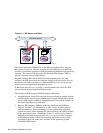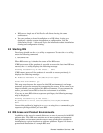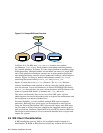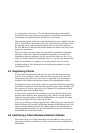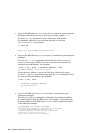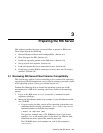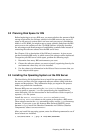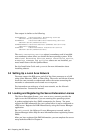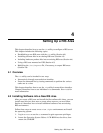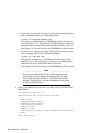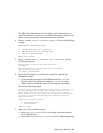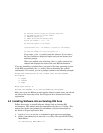Your output is similar to the following:
OSFCLINET520 installed Basic Networking Services
(Network-Server/Communications)
OSFINET520 installed Additional Networking Services
(Network-Server/Communications)
OSFOBSOLETE520 installed Obsolete Commands and Utilities
(Obsolete Components)
OSFRIS520 installed Remote Installation Service
(Network-Server/Communications)
The Basic Networking Services subset is mandatory and is installed
as a mandatory subset when you install the base operating system. If the
Additional Networking Services, Remote Installation Service,
or Obsolete Commands and Utilities subsets are not installed, you
must install them with the SysMan Menu.
See the Installation Guide and sysman
(8) for more information about
installing subsets.
3.4 Setting Up a Local Area Network
You must connect the RIS server and all of the client processors to a LAN
using either Ethernet, FDDI, or Token Ring. The server and clients all must
be on the same network or subnetwork unless the router connecting the
networks or subnetworks can forward BOOTP requests.
For instructions on setting up a local area network, see the Network
Administration: Connections manual.
3.5 Loading and Registering the Server Extensions License
The Server Extensions license (OSF-SVR or UNIX-SERVER) provides the
right to use the RIS software if you are running this operating system.
A product authorization key (PAK) accompanies the license. You must
register the PAK information for your system before it can be configured as
a RIS server. Register the PAK information by using the License Manager
application.
See dxlicense
(8), the Software License Management manual, and the
License Manager online help for more information about registering license
PAKs.
After you have registered the PAK information, you can complete the server
setup tasks described in Chapter 4.
3–4 Preparing the RIS Server



